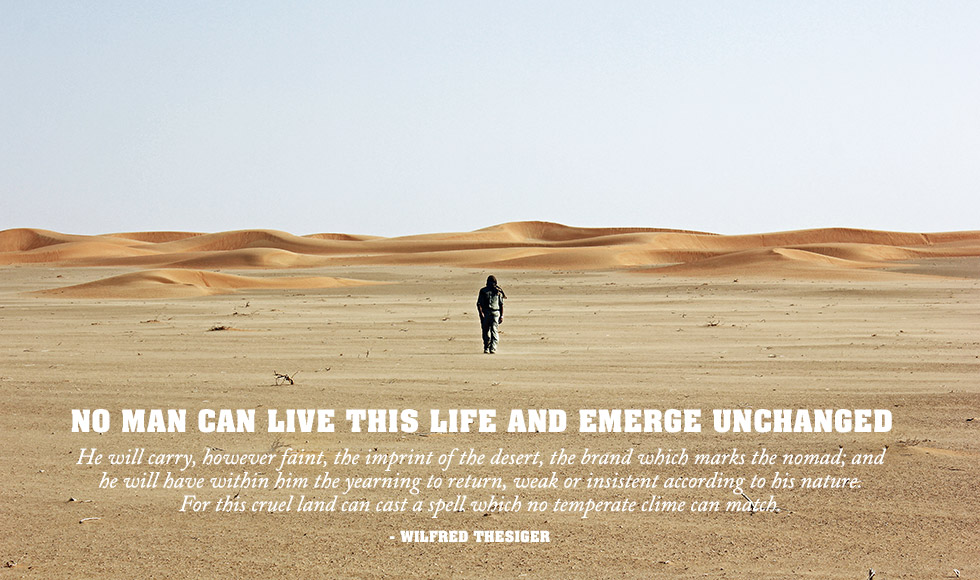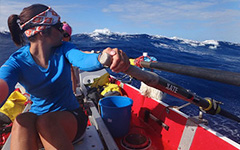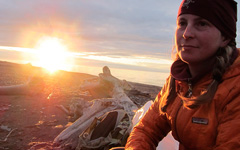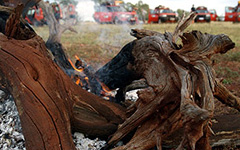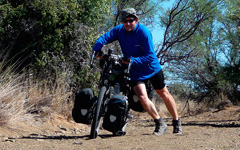
Wilfred Thesiger wisely once said that no man leaves the desert unchanged, however slight. Now, pondering on that great barren wilderness, so desolate and harsh, I confess that those great sands have enchanted me, and I long to return.

James is a conservation biologist with a passion for fieldwork and a keen interest citizen science. He is currently undertaking a PhD in conservation genetics at Queen Mary, University of London.
James’s main research interests are the effects of habitat fragmentation on the conservation of rare species. He is also a keen advocate of youth development through scientific expeditions. James can now be found working on a new conservation project in the Scottish Highlands.
Find out more via his website: http://www.jamesborrell.co.uk or follow James on
Twitter @James_Borrell
As a biologist, I had a somewhat barren impression of the desert, and it was to address this common misconception that we had come all this way. Under the cover of darkness as we slept out under a night sky brimming with stars, the desert would come alive. At dawn, to our surprise, the immaculately smooth sand would be crossed with the tell-tale signs of life just feet from where we had laid. Tracks and trails, seemingly at random, heading this way and that, away from curious eyes eking out an existence in this forbidding landscape.
Soon after arriving we set out in teams to explore the area. We had come equipped with camera traps, small portable cameras triggered by an infrared sensor, designed to remotely film passing animals. In a landscape so sparsely filled with prominent features – the dunes roll endlessly into a sea of sand – deciding where to place our traps was a considerable challenge. We learnt to distinguish one area from the next by the feint presence of greyish wisps of vegetation or the slightest indication of water under the surface. We found ancient and gnarled bushes clinging to existence in the hollows of dunes, and small brilliant green bushes left undisturbed and perhaps full of poisons. We built pitfall traps for insects and reptiles, laid small mammal boxes to catch Jerboa and Jird (all harmless I might add) and undertook all manner of experiments to document the life here.
We looked closely at a landscape we might have simply journeyed through, and in just a few short weeks saw the many faces of the desert. Far from this empty nothingness we woke to dew covered sleeping bags and mist shrouded dunes as moisture rolled in from the coast and shivered as night-time temperatures plummeted to freezing point. We whooped with joy after climbing laboriously up countless sandy peaks and marvelled at the deep resonating rumble emanating from within as we descended. We experienced the unpleasantness of a mild sand storm and grew accustomed to having grit in everything we ate or drank. Above all we cherished the simplicity of life here.
As our time drew to a close, we huddled around the bonnet of the vehicle in the cool of our final evening and loaded images from our camera traps. The team gathered in anticipation. A curious thing about camera traps is that you live in blissful ignorance of the life around you, until it comes time to leave and you retrieve your findings. In all honesty we had been ambitious and wildly unrealistic. We were a relatively inexperienced team, from a myriad of backgrounds, hoping to scratch the surface of this unimaginably vast place.
Surprisingly, as the grainy black and white video clips flickered into life, there was life right in front of our eyes. Whiskers sniffing at the lens, fur, teeth chewing curiously at the casing, and a Sand Fox scurries off into the distance (Vulpes ruppellii for nerds). Later we found another, and another, hares too, and signs of great spiny-tailed lizards called Dhubs. It’s hard to over state our elation at simply finding anything at all. The desert is a desolate, silent place, beautiful in it’s simplicity more than anything else. But if you can get beneath the skin of this vast wilderness, there is much more than meets the eye.
Occasionally, when you least expect it, the wildlife found us. I woke sleepily the following morning to an inquisitive camel peering back at me in the half-light, standing nonchalantly at the foot of my sleeping bag while his friends rummaged our belongings for food and water.
Reluctantly we loaded the vehicles and headed South to continue our fieldwork over the coming weeks in Dhofar’s Coastal mountain range (Oman really is a surprising gem!). The desert slipped away behind us in a cloud of our own dust. Wilfred Thesiger wisely once said that no man leaves the desert unchanged, however slight. Now, pondering on that great barren wilderness, so desolate and harsh, I confess that those great sands have enchanted me, and I long to return.
Don't miss out. Sign up to receive free monthly email updates from Sidetracked here.







